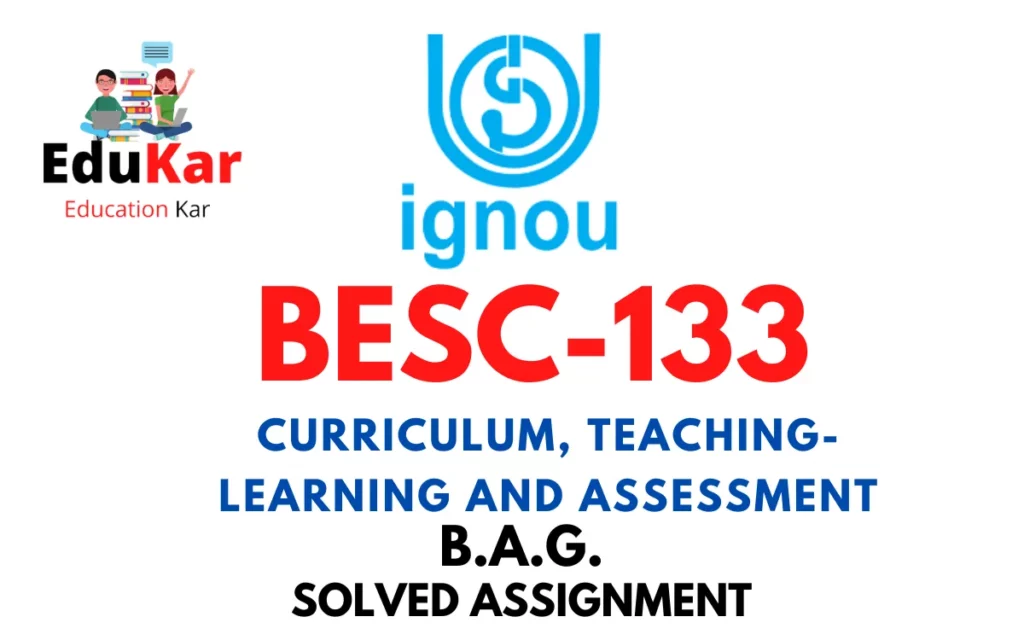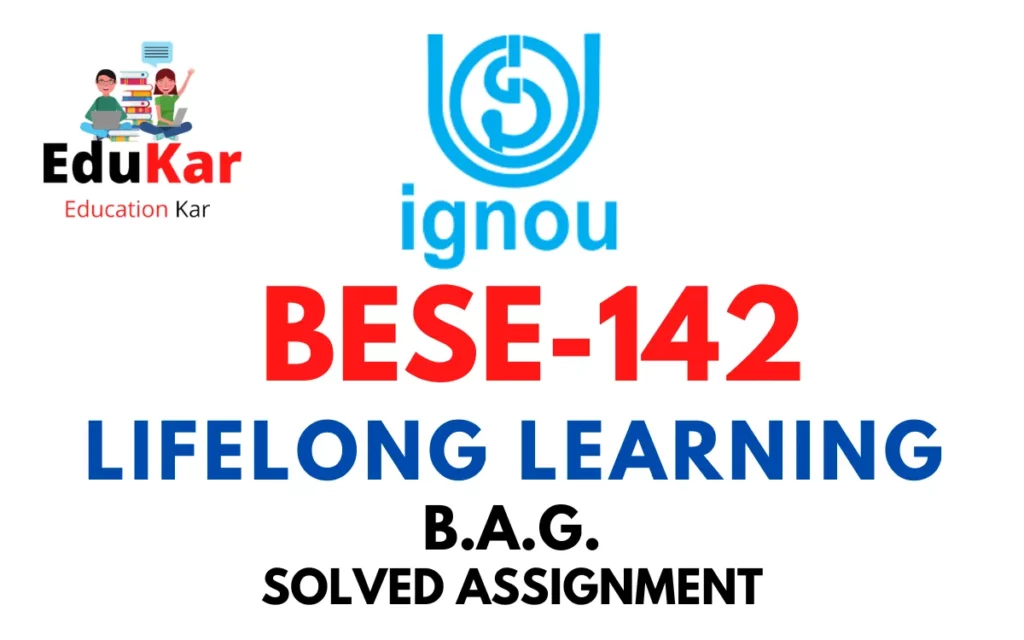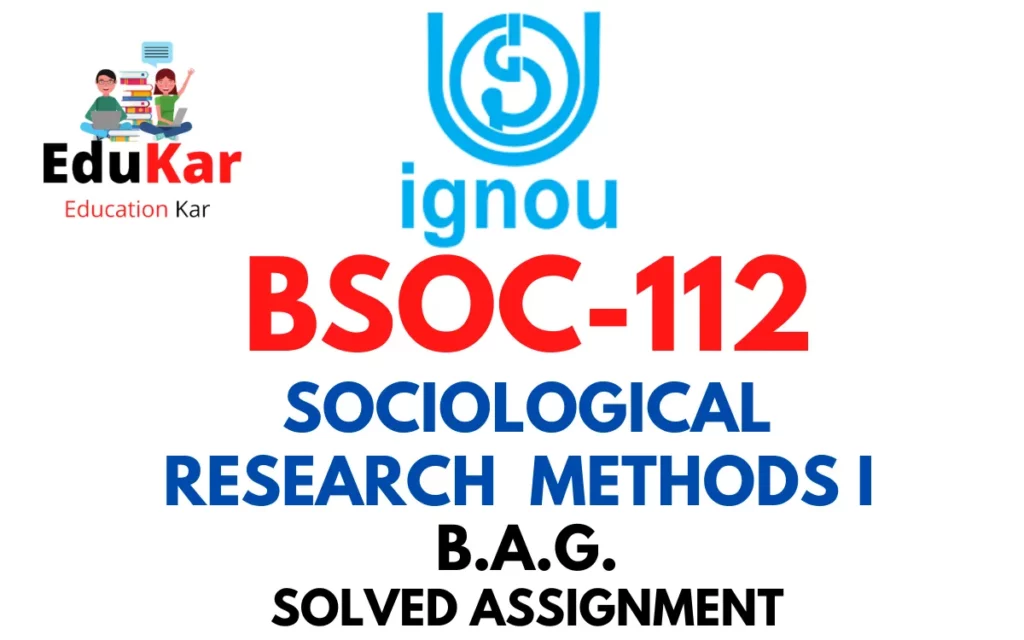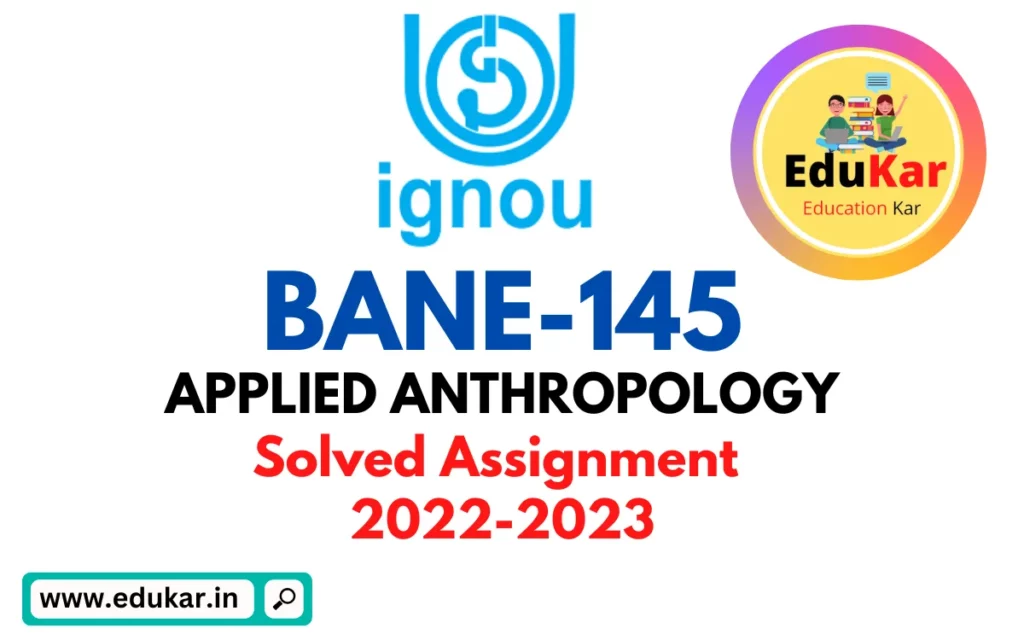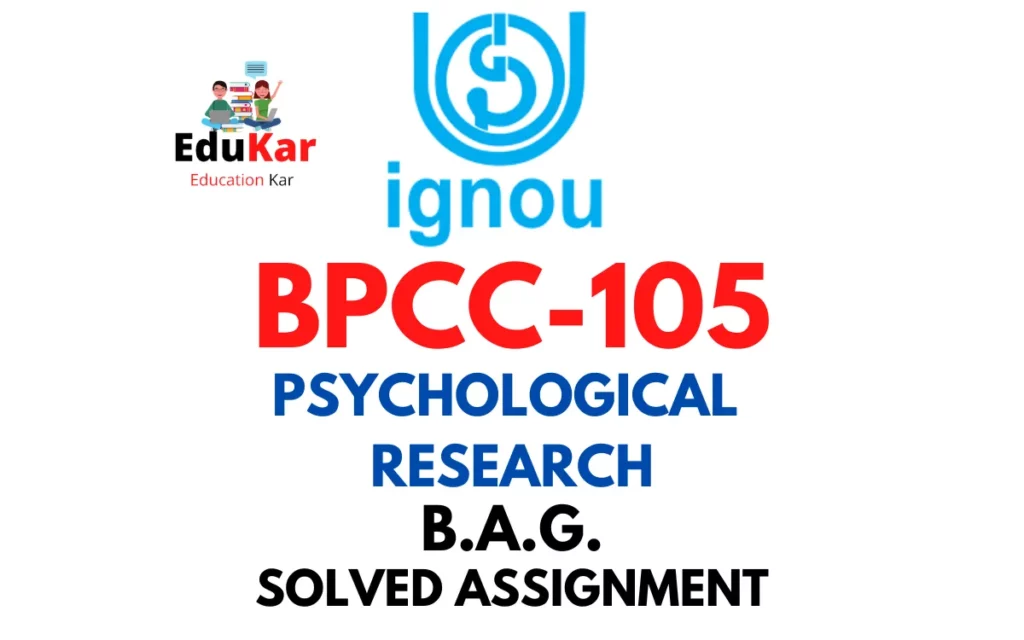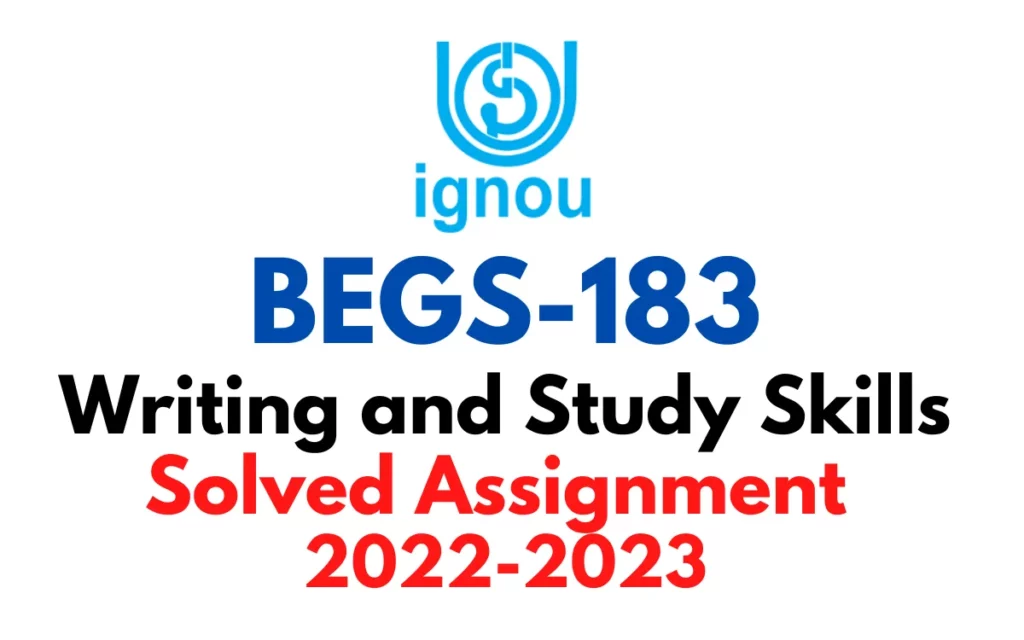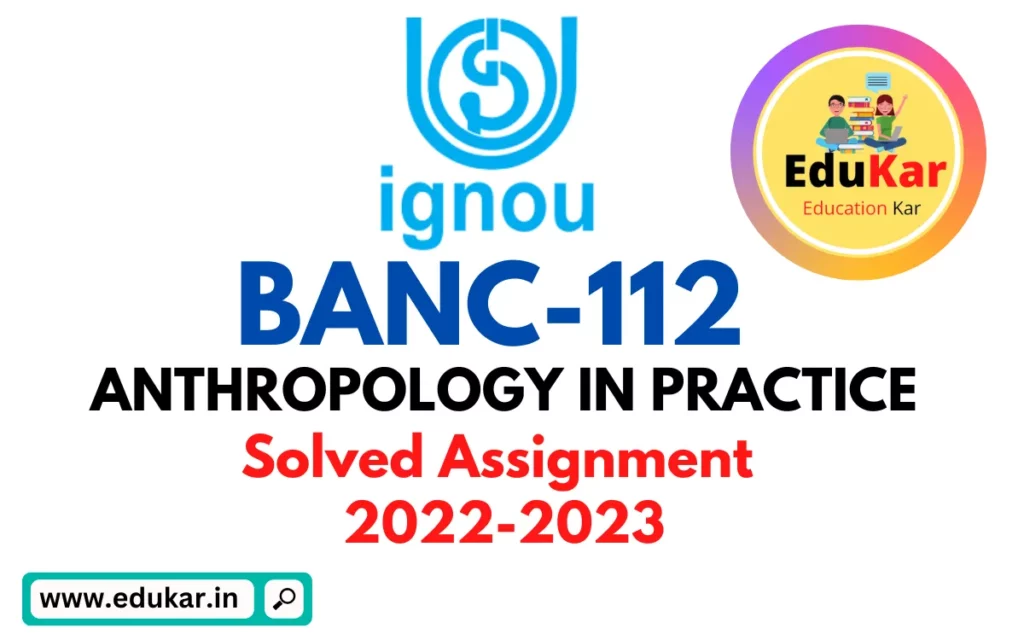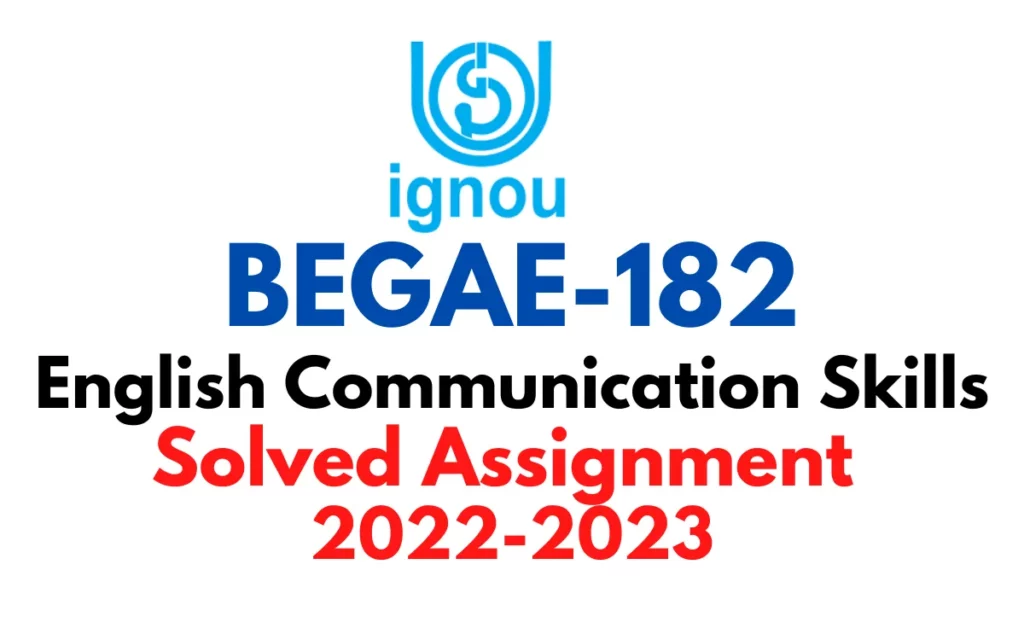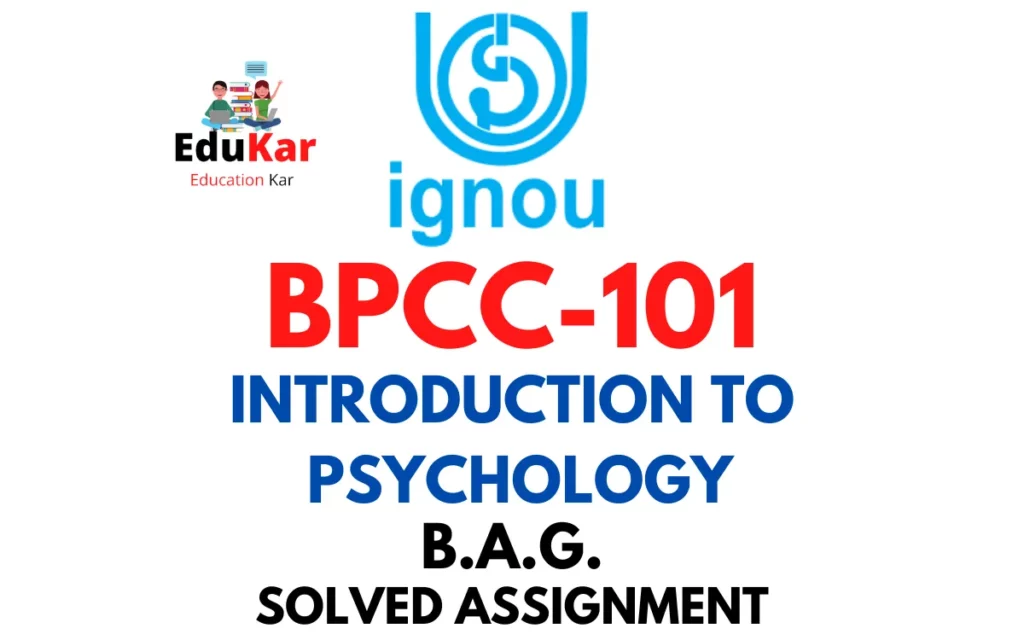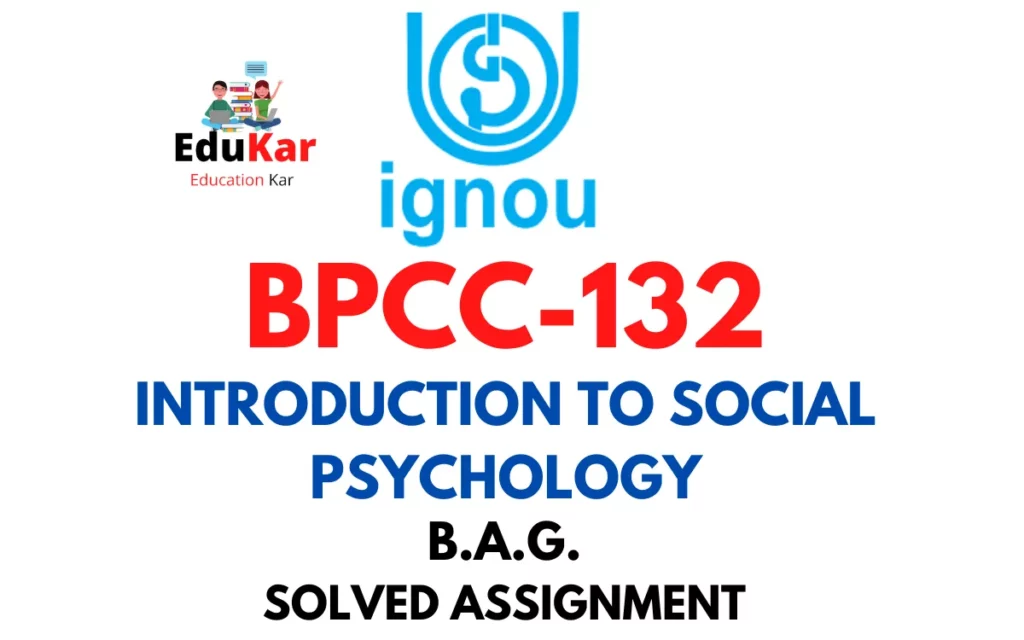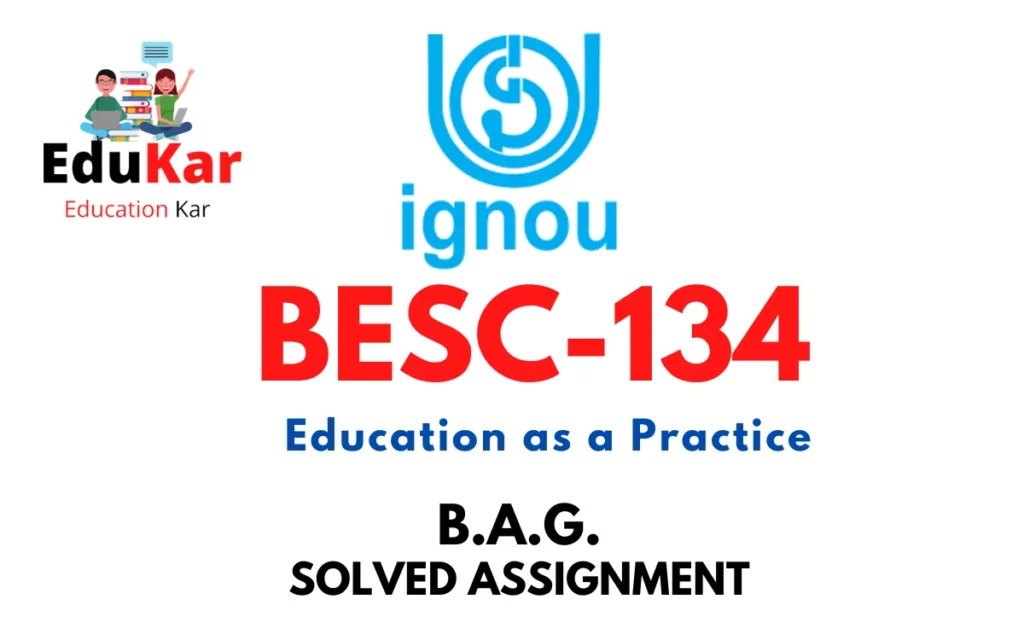Contents
| Title | BEGS 185- English Language Teaching(BAG) Solved Assignment 2022-2023 |
| University | IGNOU |
| Degree | Bachelor Degree Programme |
| Course Code | BEGS 185 |
| Course Name | English Language Teaching |
| Year | 2023 |
| Language | English |
| Assignment Code | BANS 183/ASST/TMA |
| Last Date for Submission of Assignment: | For June Examination: 31st March For December Examination: 30th September |
BEGS 185-English Language Teaching Solved Assignment (2022-2023): is designed to support students in their learning of the theories and practices of teaching English as a second language. This assignment covers a wide range of topics, from language assessment and curriculum development to teaching methods and materials. The content of the assignment is based on current research and best practices in the field of English language teaching, and is intended to help students develop a deeper understanding of the subject.
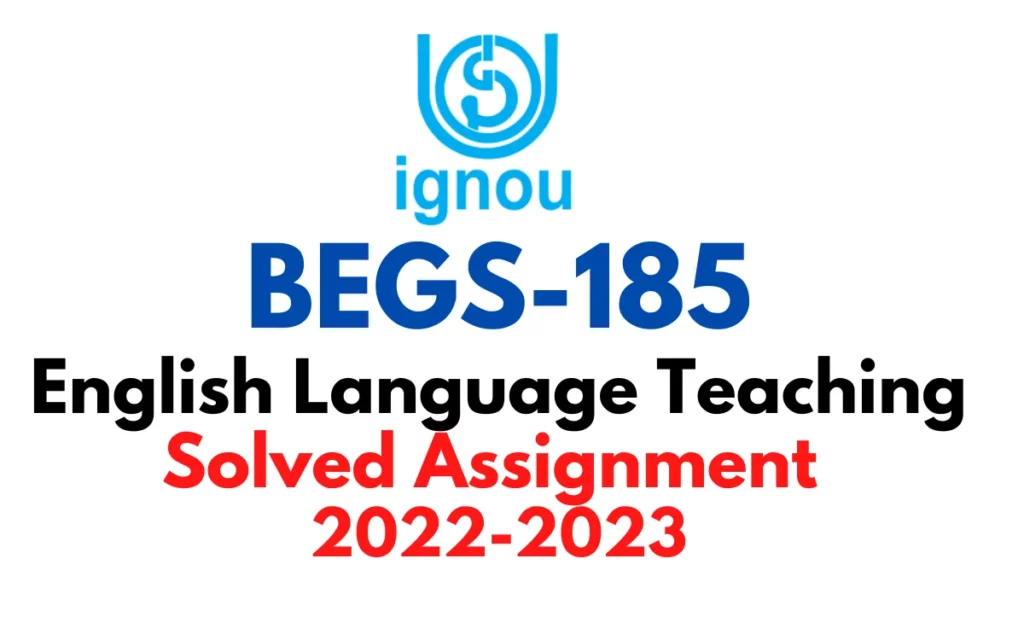
The assignment is an important component of the IGNOU BEGS 185-English Language Teaching course, providing students with the opportunity to apply their knowledge to real-world situations. Whether you are a teacher, a student, or simply interested in the field of English language teaching, this assignment is an excellent resource for enhancing your knowledge and skills in this area.
BEGS-185
English Language Teaching
Assignment July, 2022 & January, 2023 Sessions
(Based on Blocks 1 – 3)
Section A
Write short notes on the following: 5 × 5 = 25
(i) Development language disorder
Development language disorder, also known as developmental language disorder, is a condition where an individual has difficulty acquiring and using language, even though they have typical intellectual and physical development. The onset of the disorder is usually in early childhood, often before the age of five, and can persist into adulthood.
The symptoms of developmental language disorder include difficulties with speaking, understanding, and producing language, as well as problems with grammar, vocabulary, and social communication. The severity of the symptoms can vary widely from person to person, and can range from mild to severe.
Developmental language disorder is not caused by hearing loss, cognitive impairment, or other medical conditions. It is also not related to cultural, educational, or socioeconomic factors. However, genetics and environmental factors, such as exposure to language during early childhood, can play a role in the development of the disorder.
Diagnosis of developmental language disorder is based on an evaluation of the individual’s language abilities, as well as a thorough assessment of their developmental and medical history. There is no cure for the disorder, but there are a range of treatment options available, including speech and language therapy, educational support, and behavioral therapy.
(ii) Visual motor difficulties
Visual motor difficulties refer to challenges with the coordination of the eyes and hands, leading to difficulties in tasks such as drawing, cutting, and using tools. This can impact a child’s ability to perform everyday tasks and can also have a significant impact on their ability to learn and succeed in school.
There are a number of causes of visual motor difficulties, including neurological problems, developmental delays, and visual perceptual difficulties. Children with these difficulties may have trouble tracking moving objects, accurately judging distances, or coordinating their hand movements with what they see.
Signs of visual motor difficulties can include poor handwriting, trouble copying from the board, difficulty with activities such as cutting or drawing, and a tendency to get tired quickly when completing fine motor tasks. These difficulties can also have an impact on a child’s self-esteem and confidence.
It’s important to seek help from an occupational therapist or a developmental pediatrician if you suspect your child has visual motor difficulties. Early intervention is key to ensuring that children with these difficulties receive the support they need to succeed.
(iii) Multiple Intelligences
Multiple Intelligences is a theory of intelligence developed by Howard Gardner in 1983, which states that intelligence is not just a single general ability, but rather a set of several different intelligences that work together. Gardner initially identified seven distinct intelligences: linguistic, logical-mathematical, musical, spatial, bodily-kinesthetic, interpersonal, and intrapersonal.
Each of these intelligences corresponds to different ways of processing information and solving problems. For example, individuals with a strong linguistic intelligence excel in language-based activities such as reading, writing, and speaking, while those with a strong musical intelligence have a talent for rhythm, melody, and harmony.
Gardner’s theory of multiple intelligences challenges the traditional view of intelligence as a single entity, and suggests that individuals can have strengths in different areas. This can have implications for education and teaching, as it encourages teachers to consider the diverse needs and abilities of their students, and to find ways to engage and challenge each student based on their unique strengths.
(iv) General Scholastic Ability
General Scholastic Ability refers to an individual’s overall ability to learn and perform in a school setting. It encompasses a range of cognitive abilities, including verbal and nonverbal reasoning, memory, attention, and problem-solving skills.
General Scholastic Ability is commonly assessed through standardized tests, such as aptitude or intelligence tests. The results of these tests are used to identify areas of strength and weakness, as well as to predict future academic success.
It is important to note that General Scholastic Ability is not the only predictor of academic success. Other factors, such as motivation, work habits, and study skills, also play a significant role in academic achievement. Furthermore, General Scholastic Ability should not be viewed as a fixed or permanent trait, as it can be developed and improved over time through continued learning and practice.
(v) Learner independence and autonomy
Learner independence and autonomy refers to the ability of students to take charge of their own learning and make decisions about their education. This means that they have the skills and knowledge to identify what they need to learn, set goals, and plan and carry out their own learning activities.
Promoting learner independence and autonomy has a number of benefits. It can help students develop critical thinking and problem-solving skills, as well as fostering a sense of responsibility and ownership over their own learning. It can also increase motivation, as students are more likely to be engaged in learning when they have a say in what they are learning and how they are learning it.
To promote learner independence and autonomy, teachers can provide students with opportunities to make decisions about their learning, such as choosing their own topics or projects, working in groups, or using technology to access information. They can also encourage students to reflect on their own learning, set goals, and assess their progress.
Section B
Answer the following questions in 150 words each: (3 X 10 = 30)
1. Discuss the speech and language difficulties in children?
Speech and language difficulties in children refer to challenges with communication and language development. These difficulties can impact a child’s ability to understand and express themselves through speech and language, and can have a significant impact on their daily life and learning.
Some common speech and language difficulties in children include:
- Speech sound disorders: difficulty producing sounds correctly, such as substituting or omitting sounds
- Stuttering: difficulty with the flow of speech, including repeating words or phrases
- Articulation disorders: difficulty with speaking clearly, including substituting or omitting sounds or words
- Receptive language difficulties: difficulty understanding language, including following instructions or answering questions
- Expressive language difficulties: difficulty expressing thoughts and ideas through language, including forming sentences and using vocabulary
- Pragmatic language difficulties: difficulty with the social use of language, including understanding nonverbal cues and taking turns in conversation.
2. Discuss the underprivileged learners and their history of education.
Underprivileged learners are students who face significant barriers to accessing quality education due to poverty, discrimination, and social disadvantage. They may come from low-income families, be refugees, live in rural areas with limited educational opportunities, or belong to minority groups.
Throughout history, underprivileged learners have often been marginalized and excluded from formal education systems, leading to a perpetuation of poverty and inequality. In the past, they were often denied access to education due to laws that prohibited certain groups from attending school, such as people of color, women, and indigenous peoples.
In the late 19th and early 20th centuries, efforts were made to improve educational opportunities for underprivileged learners, particularly in the United States and Europe. This led to the development of public schools and the introduction of compulsory education laws, which made it possible for all children to receive an education, regardless of their background or social status.
However, despite these efforts, many underprivileged learners continue to face significant barriers to accessing quality education. They may attend overcrowded schools with inadequate resources, have limited access to technology and educational materials, and face discrimination and bias from teachers and classmates.
3. Why do students lose interest in school work in general? What can the teachers do to help them renew their interest in their studies?
There are several reasons why students can lose interest in school work, including:
- Boredom: students may feel that their studies are repetitive or not challenging enough
- Lack of relevance: students may not see the connection between what they are learning and their daily life or future goals
- Poor relationships with teachers: students may feel unsupported or discouraged by their teachers
- Learning difficulties: students may struggle with a particular subject or have a learning disability
- Lack of motivation: students may not see the value or importance of their studies, or may have other priorities.
To help students renew their interest in their studies, teachers can take several steps, including:
- Differentiating instruction: providing students with multiple ways to access information and engage with the material to meet their individual needs
- Making connections to real-life: helping students see the relevance and application of their studies in their daily life or future goals
- Building positive relationships: fostering a supportive and encouraging learning environment where students feel valued and respected
- Providing support for learning difficulties: offering accommodations, resources, and support for students who struggle with specific subjects or have learning disabilities
- Fostering intrinsic motivation: helping students see the value and importance of their studies, and encouraging them to set and pursue their own goals.
Section C
Answer the following questions in 250 words each: (3 X 15 = 45)
1. Discuss the difficulties with writing.
Writing is a complex and nuanced task that can present several difficulties for individuals, regardless of their level of experience or skill. Some of the most common difficulties include:
- Writer’s block: One of the biggest challenges in writing is facing a lack of ideas or a loss of creative flow. This can result in frustration and make it difficult to continue writing.
- Lack of inspiration: Another common issue is a lack of motivation or inspiration. This can lead to a feeling of boredom or disinterest in the writing process, making it challenging to continue.
- Organization: Writing often requires a high level of organization and structure. The difficulty in organizing thoughts and presenting them cohesively can be a challenge, especially when writing longer pieces.
- Grammar and syntax: Another common challenge is the difficulty in constructing sentences correctly and using proper grammar and syntax. This can make the writing process time-consuming and can lead to frustration if not addressed.
- Time management: Writing often requires a significant amount of time and focus. Balancing the demands of other tasks and responsibilities can make it difficult to allocate enough time and attention to writing.
- Feedback and criticism: Receiving feedback and criticism can be a challenging aspect of writing. It can be difficult to accept criticism and incorporate it into the writing process in a constructive way.
2. How can the curriculum be made meaningful for the underprivileged learners?
Making the curriculum meaningful for underprivileged learners involves considering their unique needs and experiences, and adapting instruction to meet their needs. Some strategies that can be used to make the curriculum meaningful for underprivileged learners include:
- Relevance: Connecting the curriculum to the learners’ experiences, interests, and cultures, and highlighting how the material will be useful in their future lives.
- Hands-on learning: Incorporating hands-on, experiential learning opportunities, such as projects and field trips, which can make the material more engaging and memorable.
- Technology integration: Using technology to access information and resources and make learning more interactive and engaging.
- Cultural sensitivity: Incorporating the learners’ cultures and experiences into the curriculum and acknowledging the diverse perspectives and experiences of all students.
- Collaborative learning: Encouraging students to work together and engage in group activities, which can build relationships, increase motivation, and help students learn from one another.
- Access to resources: Providing students with access to books, technology, and other resources, and encouraging them to take advantage of community resources and organizations that support their learning.
- Supportive environment: Creating a positive and supportive learning environment that values and respects the learners and encourages them to take an active role in their own education.
- Emphasizing soft skills: Incorporating the development of soft skills, such as critical thinking, problem-solving, and communication, which can help students succeed in school and beyond.
3. Discuss the problems faced by underprivileged in learning English and ways in which they can be helped to overcome this difficulty.
Underprivileged learners face several challenges in learning English, including:
- Lack of exposure: Many underprivileged students may have limited exposure to the English language, making it difficult for them to develop listening and speaking skills.
- Lack of resources: Many underprivileged students may not have access to resources, such as books, technology, and educational materials, that can support their learning of English.
- Limited support: Many underprivileged students may not have access to trained teachers or tutors who can provide support and guidance in their learning of English.
- Learning difficulties: Some underprivileged students may have learning difficulties, such as dyslexia or other learning disabilities, which can make it difficult for them to learn English effectively.
To help underprivileged students overcome these difficulties in learning English, several strategies can be employed:
- Providing exposure: Providing students with opportunities to listen to and speak English, through exposure to media, literature, and conversation with native speakers.
- Providing resources: Providing students with access to books, technology, and educational materials that can support their learning of English.
- Providing support: Providing students with access to trained teachers or tutors who can provide support and guidance in their learning of English.
- Adapting instruction: Adapting instruction to meet the needs of underprivileged students, including providing visual aids and hands-on activities.
- Encouraging family involvement: Encouraging families to support their children’s learning of English by reading books, playing language games, and engaging in conversation at home.
- Emphasizing soft skills: Emphasizing the development of soft skills, such as critical thinking, problem-solving, and communication, which can help students succeed in school and beyond.
FAQs:
Where can I find the BEGS 185- English Language Teaching (BAG) Solved Assignment?
The BEGS 185- English Language Teaching (BAG) Solved Assignment is usually available on websites that offer study material for students. It can also be found on educational blogs like Edukar.in
Can I use the BEGS 185- English Language Teaching (BAG) Solved Assignment for exams as well?
The BEGS 185- English Language Teaching (BAG) Solved Assignment is mainly intended to provide solutions to the assignments and should not be used as a sole source for exams but you can revise through it during the exams. It might help you.
Can I download the BEGS 185- English Language Teaching (BAG) Solved Assignment for free?
Yes, www.edukar.in provides you all the IGNOU Assignments for free.

